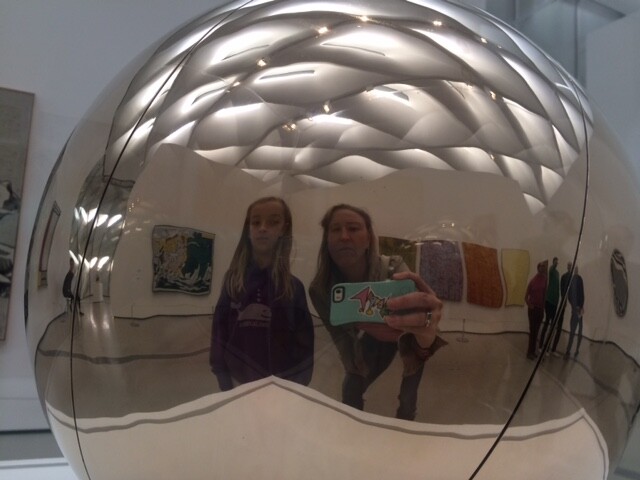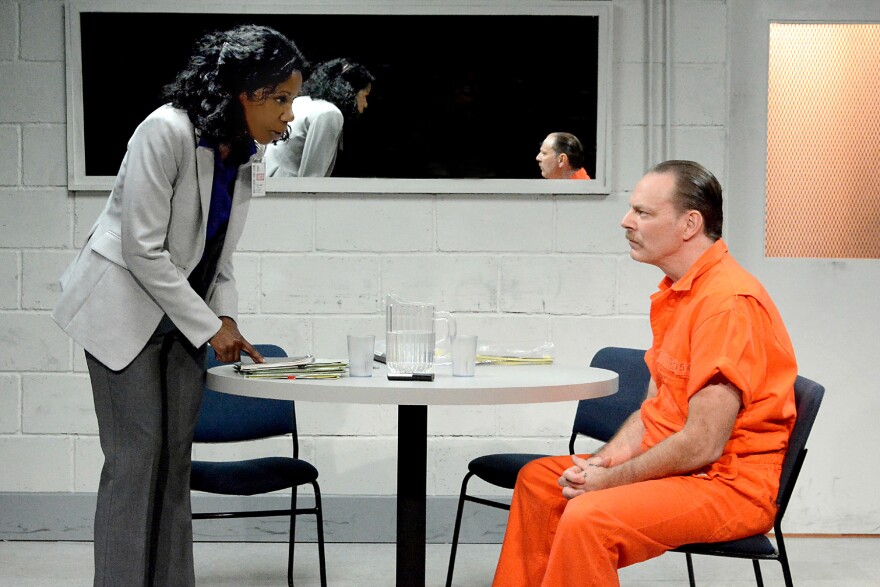“Building the Wall" is a new Robert Schenkkan play that imagines the effects of President Donald Trump's immigration policies; in the era of Instagram and Snapchat, art museums are harnessing the power of their visitors' social media feeds; the Emmys are not until September, but award campaigning is underway.
Robert Schenkkan takes on President Trump in new play
Robert Schenkkan won the 1992 Pulitzer Prize for “The Kentucky Cycle,” and the 2014 Tony Award for “All the Way,” his play about Lyndon Johnson’s effort to pass the Civil Rights Act.
Now he’s turned his attention to our current president in a play titled “Building the Wall,” which is having its world premiere at the Fountain Theater in Los Angeles. The play, which is set in 2019, features two characters — a college professor who visits a prison to interview the former supervisor of a federal government detention facility for illegal immigrants.
You may wonder how Schenkkan managed to write the play so quickly. Well, in fact, he began writing it before the November election.
What I was feeling is that, regardless of who won, we'd already crossed a line in this dismal presidential election campaign. I felt a need to respond to that.
When The Frame's John Horn spoke with Schenkkan recently, they discussed the making of the play and its message for audiences.
INTERVIEW HIGHLIGHTS
On what the play would have looked like had Hillary Clinton won:
The play is about a more fundamental issue, which is the importance of individual citizens not ceding their moral authority to the state. I think the play is timely, but I also think it has a timeless quality that would have endured beyond a change in the election results.
On creating a realistic story:
It was very important to me that this story, which is a speculation about the near future, be absolutely grounded in current political rhetoric and legislation. The more grounded it feels, the more potent I think the ending is.
On sympathizing with the Trump supporters:
I've spent quite a lot of time thinking about this issue. My feelings about people who voted for Trump ... many of these people voted out of a palpable and justified sense of anxiety and frustration that their needs and concerns — and these are largely economic needs — were not being met. So I look at the way people voted. and in particular [at] this individual, who I've imagined in an entirely sympathetic way. Their ideology is not necessarily mine, but they're just people and they're motivated by the same things that motivate all people.
On making the character of the Trump supporter relatable:
I want to play fairly here. I want us as an audience to understand how decent people, good people, can wind up making terrible mistakes. If I tilt the scale so far, well, it would not be much of a revelation, nor would it have much meaning. It would be very easy for the audience to feel like, I'm not that person. I would never do that. And indeed, the point is, we're all capable of making terrible mistakes.
On his response to people who say it could never happen:
My response would be, Well, that very much depends on what you do. We are the best and ultimate safeguard of our own democracy. What that requires is that we be very aware. That we not look away, that we not engage in the all-too-appealing idea of avoidance or denial ... We accept what is happening, [but] we don't normalize what is happening — that we make our decisions very consciously and predicated on our own sense of what is right and what is wrong.
"Building the Wall" is at the Fountain Theatre through May 21.
Museums want you to photobomb their art
If you’ve been to a museum lately, you may have noticed a rule change. No, you still can’t touch the exhibits, but the rule against taking pictures of the art has largely gone by the wayside. We sent non-millennial contributor Collin Friesen to find out why these sometimes-stoic intuitions have lightened up on social media. Here's his report.
Hit The Hammer Museum on Wilshire, and the people at the front desk tell you the rules right up front.
“Here are your tickets, photography is allowed just don’t use flash…”
That’s a change from the way things were just a few years ago, where angry docents would spring into action at the mere sight of a camera. Now it’s open season, and for good reason.
“The user-generated content is almost more important than the content we share, because our reach only goes so far,” says Arielle Feldman, The Hammer’s assistant manager for digital communications. She says at first, there was some resistance to the change in policy.
“There was, as you can imagine, certain people feel one way, but for the most part, the institution wants to embrace however people want to experience museums, and some people want to walk around without their phones, and other people take pictures and share with their friends.”
Meanwhile, in downtown L.A. at The Broad, visitor Inez Ortiz says one of the reasons she came was because she had seen pictures other visitors posted of the famous Infinity Mirrored Room by artist Yayoi Kusama. With her camera out, she’s trying to figure the right filter for the photo she just took of a wall sized painting. Asked what she’ll do with the picture, she had a few answers.
“My Story on Instagram, and tag The Broad, like that. It looks cool, and I want people to look to see what I’m doing today.”
A few yards away, Christopher Bow is also getting his social media on undisturbed, which isn’t always the case at other museums. He says he’s been asked to put his camera away at plenty of other museums, but that doesn’t always stop him. He then mimics how he can avoid security with a no-look hip-level camera phone picture, nicely making the point that with the proliferation of these devices, museums would be hard pressed to stop the pictures even if they wanted to.

So better to join the fire-hose of free publicity where people using Snapchat – pictures that only appear for limited time – Instagram – just photos – Facebook – come on, you know Facebook and Knurdle – the next big thing – can be a force multiplier for a museum’s ad budget.
(By the way, Knurdle isn’t a social media app, I just made it up, but I bet some of you thought, wow, Knurdle, I really need to get that. See how fast this goes?)
We're now on
! Add "lacma_museum" for art snapchats, exhibition sneak peeks, and more. pic.twitter.com/ZtZR2ZljQm
— LACMA (@LACMA)
We're now on @Snapchat! Add "lacma_museum" for art snapchats, exhibition sneak peeks, and more. pic.twitter.com/ZtZR2ZljQm
— LACMA (@LACMA) July 16, 2014
and
are also promoting themselves on Snapchat, with the Getty using song lyrics and lines from movies as captions for their pictures of art works, giving viewers that pop-culture, Old Masters synergy. Seriously though, they did one from the recent horror hit "Get Out" that’s worth a look.
But riding the free social media wave can be tricky. Some artists don’t want their work shared with a pithy caption underneath or tied-in to some National Random Animal Day.
“We have had one artist say, it was a picture of a cat,” explains Arielle Feldman from the Hammer. “They said don’t post this art work on a cat day, the art work is not about the cat.”
There are also copyright issues that pop up, especially when one gallery loans works to another. But generally, if a museum owns the art, they carve out an exemption for what they call “personal use,” which means splash it all over your multiple feeds, just don’t turn it into a poster and try to sell it.
Of course, with every opportunity comes a new challenge, and in this case, it’s how to stay current. The Broad currently has more than 200,000 Instagram followers, but remember Myspace?
On the table now is the possibility of getting on Tumblr, which isn’t as easy as it sounds according to Marketing Manager Samantha Ayson.
“I was making the case the other day for why we should start using Tumblr…and I had to preface it by explain what Tumblr is. Tumblr is a blogging platform, and we don’t have one, so I proposed using it long form, it has a younger demo than Snapchat, so time to move on from the millennials to Gen Z.”
Yeah, I guess Snapchat is just so 2016.
For the Frame, I’m Collin Friesen.
Collin Friesen is a screenwriter and radio producer living in Los Angeles.




